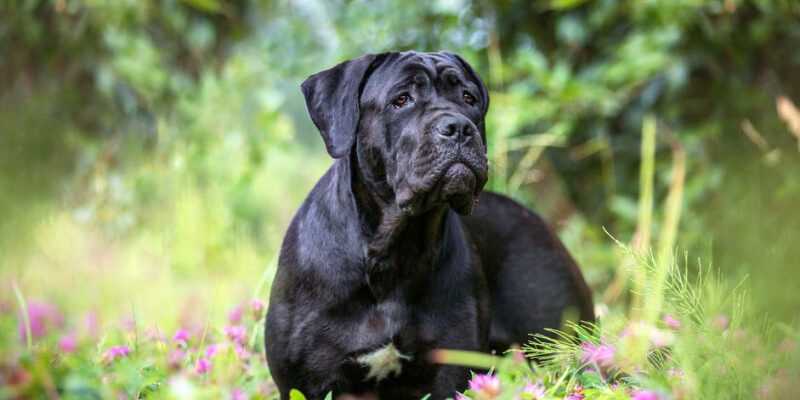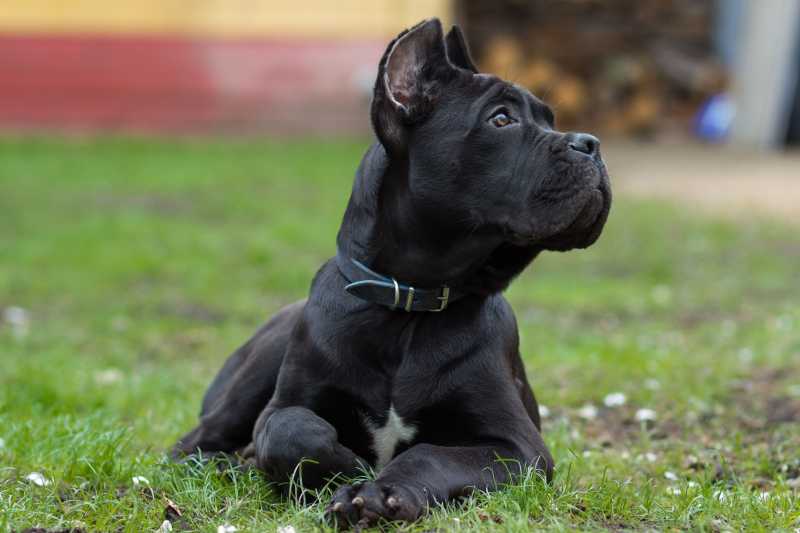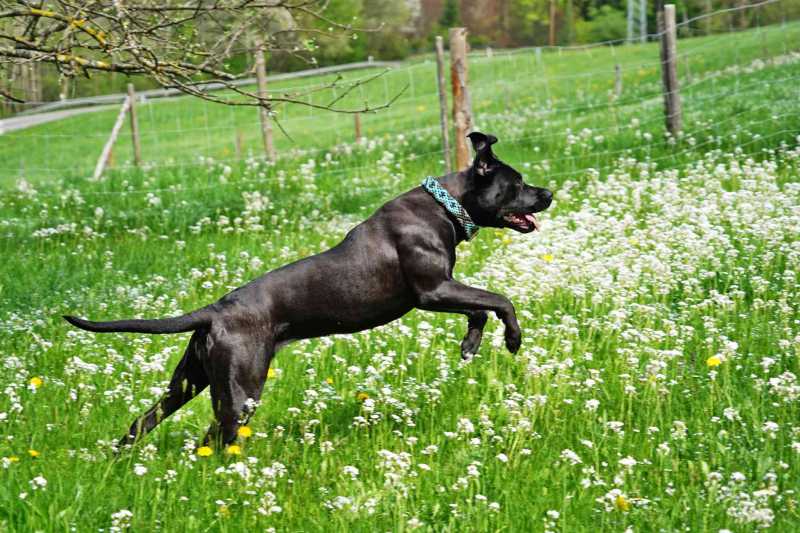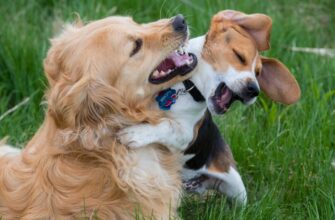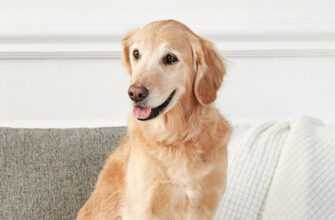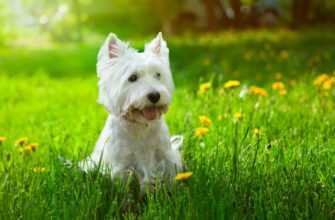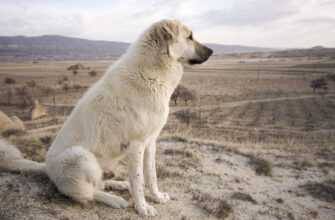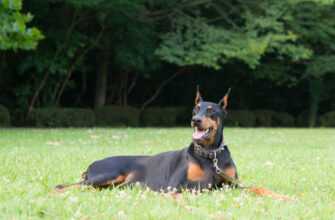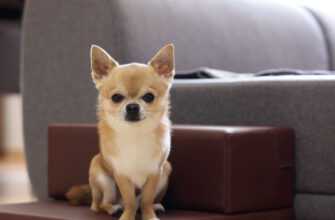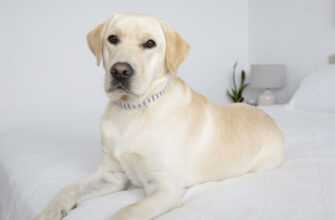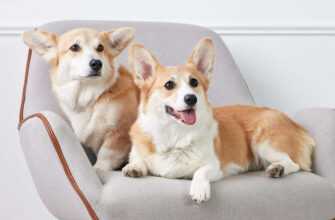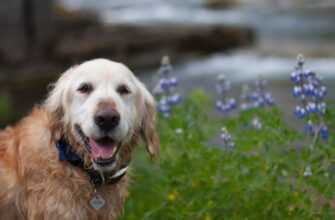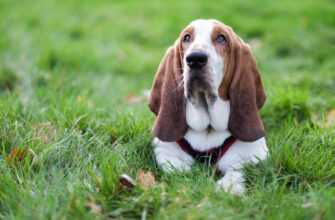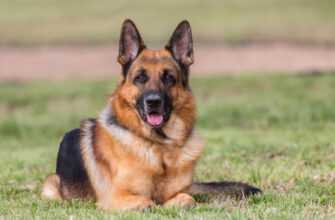The cane corso (pronounced “KAH-Nay KOR-So”) is a large-boned and muscular working dog with a noble, confident disposition and a lineage that goes back to ancient Rome. Cane corsos are powerful dogs that may seem intimidating to some. These fearless and vigilant dogs are not right for everyone. However, these gentle giants are often misunderstood and can actually make excellent companions. For those who like the idea of a very large dog that is protective and athletic, the cane corso is one to consider.
Breed Overview
- GROUP: Working
- HEIGHT: About 23.5 to 27.5 inches at the shoulder
- WEIGHT: Proportionate to height, typically 80 to 120 pounds
- COAT: Short and coarse
- COAT COLOR: Black, gray, fawn, and red; brindle is possible in all colors, may have black or gray mask, and may have small patches of white
- LIFE SPAN: 10 to 12 years
- TEMPERAMENT: Reserved, quiet, gentle, calm, stable, even-tempered
- HYPOALLERGENIC: No
- ORIGIN: Italy
Characteristics of the Cane Corso
Despite its appearance, which some might find intimidating, the cane corso can be affectionate and gentle. This breed will bond deeply with its family and act as a protector. With proper handling and socialization, the cane corso can get along well with children, even forming a close bond. However, children must also be taught how to behave around dogs and never be left unsupervised.
| Affection Level | High |
| Friendliness | Medium |
| Kid-Friendly | Low |
| Pet-Friendly | Medium |
| Exercise Needs | High |
| Playfulness | Low |
| Energy Level | Medium |
| Trainability | High |
| Intelligence | Medium |
| Tendency to Bark | Medium |
| Amount of Shedding | Medium |
History of the Cane Corso
The cane corso originated in Italy and can be traced back to ancient times. The molossus, a now extinct mastiff-type dog, is an ancestor of the cane corso and similar mastiff-type dogs. Throughout its early history, the cane corso acted as a guard dog, war dog, and skilled hunter of various game (including very large game). Its name is derived from the Italian word for dog, cane, and the Latin term cohors, which means “protector” or “guardian.”
A significant decline of the cane corso breed was brought on by World Wars I and II, but small numbers of the dogs still existed. During the 1970s, cane corso enthusiasts sparked a revival of the breed. The first cane corso dogs arrived in the U.S. in 1988. The breed was admitted to the AKC miscellaneous class in 2007 and received full recognition into the AKC working group in 2010.
Cane Corso Care
Exercise and training are most important to a cane corso, and happily, grooming requirements are basic. A cane corso needs a sturdy, high fence when allowed outdoors. The breed has a high prey drive and is prone to chasing and killing small animals such as cats and other dogs. They are territorial and will patrol the fence line, protecting the property from passersby.
Exercise
A true working breed, the cane corso is active and driven. Daily exercise will help keep the cane corso physically and mentally fit. Brisk walking or jogging for at least a mile is a good start, so plan on spending a minimum of 30 minutes a day exercising together.
If you don’t have a job for a cane corso to do, it might find its own and end up digging holes and chewing your belongings. If you have a farm, the dog can herd livestock. If you own a business, have your dog greet customers. But if you are a more typical homeowner, spend time each day with a dog sport, learning tricks, or practicing obedience skills.
Grooming
The cane corso has a short, coarse coat and is typically just a light shedder. Grooming needs are very basic—just occasional brushing and bathing as needed. Like other large dogs, the cane corso might have nails that wear down naturally. However, occasional nail trims may be necessary. Check the length of your dog’s nails on a regular basis so it can remain comfortable and mobile.
The ears of the cane corso are often cropped into an equilateral triangle, but this is not a requirement according to the breed standard. The tail is typically docked at the fourth vertebra.
Training
Proper training and socialization are essential for all cane corsos. With a natural aversion to strangers and a tendency to be territorial, you must be diligent and consistent while training. This is also crucial because of the dog’s giant size so careful attention should be placed upon prevention of jumping, leaning, and leash-pulling. The cane corso is intelligent and hard-working, so it should not be difficult for this breed to learn.
Common Health Problems
Responsible breeders strive to maintain the highest breed standards as established by kennel clubs like the AKC. Dogs bred by these standards are less likely to inherit health conditions. However, some hereditary health problems can occur in the breed. Be aware of the following conditions:
- Hip Dysplasia: This is an inherited condition that can lead to lameness and arthritis.
- Gastric Dilatation-Volvulus: Bloating after eating and drinking too fast is possible. If the stomach twists, it can cut off the blood supply and create a medical emergency.
- Ectropion: A common condition in which the lower eyelids droop or roll out.
Diet and Nutrition
An adult cane corso will need 4 to 5 cups of dry dog food per day. It’s best to divide it into two meals to help reduce the risk of bloating and stomach torsion. Be sure to assess whether your dog is getting overweight. If you note weight gain, ask your veterinarian whether you need to change the feeding schedule, amount, type of food, and exercise routine.
Where to Adopt or Buy a Cane Corso
If you think the cane corso could be right for you, try to locate cane corso breeders and owners in your area so you can spend some time with the breed first. Also, consider searching for a cane corso rescue group to adopt.
Make sure you understand what is necessary to properly care for this breed before you bring one into your life. Begin your search through the Cane Corso Association of America. Expect to pay on average of $1,500 for a puppy, but the cost can skyrocket to thousands more for a pedigreed cane corso pup.
Check with your local animal shelter and rescue groups to see if there’s a cane corso available for adoption. Large- and giant-breed rescue groups such as Big Dogs Huge Paws Inc. or Cane Corso Rescue may have cane corsos available to adopt.
Cane Corso Overview
Pros
- Forms a close bond with family members
- Makes a good watchdog
- An easy-to-maintain coat that doesn’t need much grooming
Cons
- Needs significant exercise and obedience training
- At risk for joint problems and hip dysplasia, due to size
- Larger-than-average size can be difficult for small people and children to handle
FAQ
- Is a cane corso a good dog for a first-time owner?
A cane corso is best adopted by a person who is familiar with dog training rather than a first-time owner. There are many reasons, spanning from the cost of care and feeding such a giant dog to its exercise and training needs. This breed can also act indifferent to most people which can worry first-time dog owners. Unfortunately, first-time dog owners give up this breed for failure to properly train and socialize a cane corso.
- Is a cane corso aggressive?
This dog looks like it could be vicious, but it is not. However, with that said, the breed does have an assertive personality, especially when intruders invade its property. Proper training helps this breed understand when someone or something is truly dangerous to its territory.
- Is this breed banned in the United States?
This breed may be banned in some cities and towns around the country and subject to breed-specific legislation that is active in several hundred cities across the U.S. For example, some areas of Colorado ban cane corsos. If you are moving to a new state, city, or apartment complex, you must find out if you are allowed to have a cane corso as a pet.

 Home
Home Animal Adoption
Animal Adoption Animal Names
Animal Names Cats
Cats Dogs
Dogs